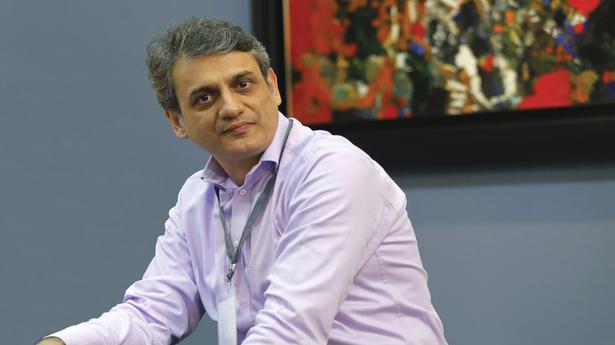
Ashish Anand brings DAG to the Taj, and can finally take a vacation
The Hindu
DAG has a new Mumbai address, an inaugural show with some unseen masterpieces, and plans for big expansions. Ashish Anand gives The Hindu Weekend a peek
Ashish Anand is beaming. The CEO and managing director of DAG, the powerhouse art gallery that debuted two new spaces at Mumbai’s Taj Mahal Palace hotel last weekend, could not have asked for a more opportune guest at his new space. Sachin Tendulkar strolled in on a quiet Thursday morning, as the gallery was putting up its new show, Iconic Masterpieces of Indian Modern Art. The Master Blaster took in the sumptuous paintings, featuring 50 rare and historic works spanning 200 years of art. Billed as the gallery’s most ambitious exhibition till date, it includes many paintings being shown in India for the first time.
“It can’t get more iconic than the Taj as an address,” Anand, 51, says. “People walk in who would otherwise not walk into a gallery because they don’t have the time, or they feel intimidated. We get something like 50 visitors a day, whereas in a gallery you get about three or four. The exposure is phenomenal.”
Anand speaks from experience. DAG, founded in New Delhi in 1993, is housed at The Claridges hotel in the capital. Since the lease on the gallery’s old space in Mumbai expired in 2020, Anand had been looking for prime real estate. He found it at the Taj, where it is now housed in two spaces, referred to as DAG 1 and DAG 2, within the hotel’s ground floor retail area. While separated from each other by other stores, the connection works because the spaces have distinct personalities. The former exudes a rich, old world charm replete with dark wood and a library with rare volumes, and will be used to display high end works, while the latter has a more contemporary feel, with archways, large windows and parquet floors.
It was after Anand got the Taj spaces that the idea of a show on iconic works of art came to him. “I wanted to do something really special to match the importance of the inaugural spaces,” he says. The opening weekend saw more than 250 people visit on Saturday evening, and on Sunday, author Shobhaa De and her husband Dilip hosted a busy reception, which included Tina Ambani, museum head Tasneem Zakaria Mehta, and a vast array of collectors.
Accompanying the show is a lavish two-volume publication, delving into detail on each art work, with contributions by 44 scholars. DAG’s head of publications and exhibitions, Kishore Singh, who spent a year painstakingly curating the show, held a walk through during the opening. He explained that this is the first time that works by western artists — described as orientalists — including Dutch artist Marius Bauer, Paris-based American painter Edwin Lord Weeks, England’s Frank Brooks, and Poland’s Stefan Norblin, were being displayed. The oldest work is an expansive Company painting from 1805 by an anonymous artist of a riverside view of Agra Fort. Singh pointed out its hybrid style, a hallmark of Indian miniaturists commissioned by the East India Company. The work, valued at $1 million, is sold. Singh also highlighted The Poet, a 1938 cement sculpture by Ramkinkar Baij, considered the first modern Indian sculpture, of Rabindranath Tagore’s head, FN Souza’s Seated Nude on a Blue Armchair, MF Husain’s rare landscape of Udaipur, and The Coquette, a beautiful painting attributed to the studio of Raja Ravi Varma.
The most poignant work in the show (not on display in Mumbai, but included in the book) is Nicholas Roerich’s Banner of Peace, possibly the most important painting by the Russian artist, created in 1931 after he moved to India. Roerich, one of India’s nine national artists, had seen many cultural institutions destroyed during World War 1, and wanted to promote peace through culture. “Given what’s happening in the world today, this work is so relevant,” Anand says.
Anand stumbled upon art by default. His mother, who enjoyed art, had started the Delhi Art Gallery in 1993. Anand, who was in the ready-made garments business with his brothers, took over from her in 1996. Since he didn’t know much about art, he began travelling across India, spending weeks at a time in Benares, Lucknow, Bikaner, and Kolkata. He went to museums and met artists. “It took me a few years to learn,” he says. “I trained my eye, understood the market, and then systematically started buying art.”

nyone trying to slot Hong Kong filmmaker Ann Hui into a particular genre will be at a loss, for all through her 45 year-long career, she has moved easily between varied spaces, from independent cinema to the mainstream, from personal films to a bit of action too. For that matter, she has made a horror film too. Ask her about it and the 77-year old, who was conferred with the 29th International Film Festival of Kerala (IFFK)‘s Lifetime achievement award, says with disarming candour that she was just trying to see what she was good at.










